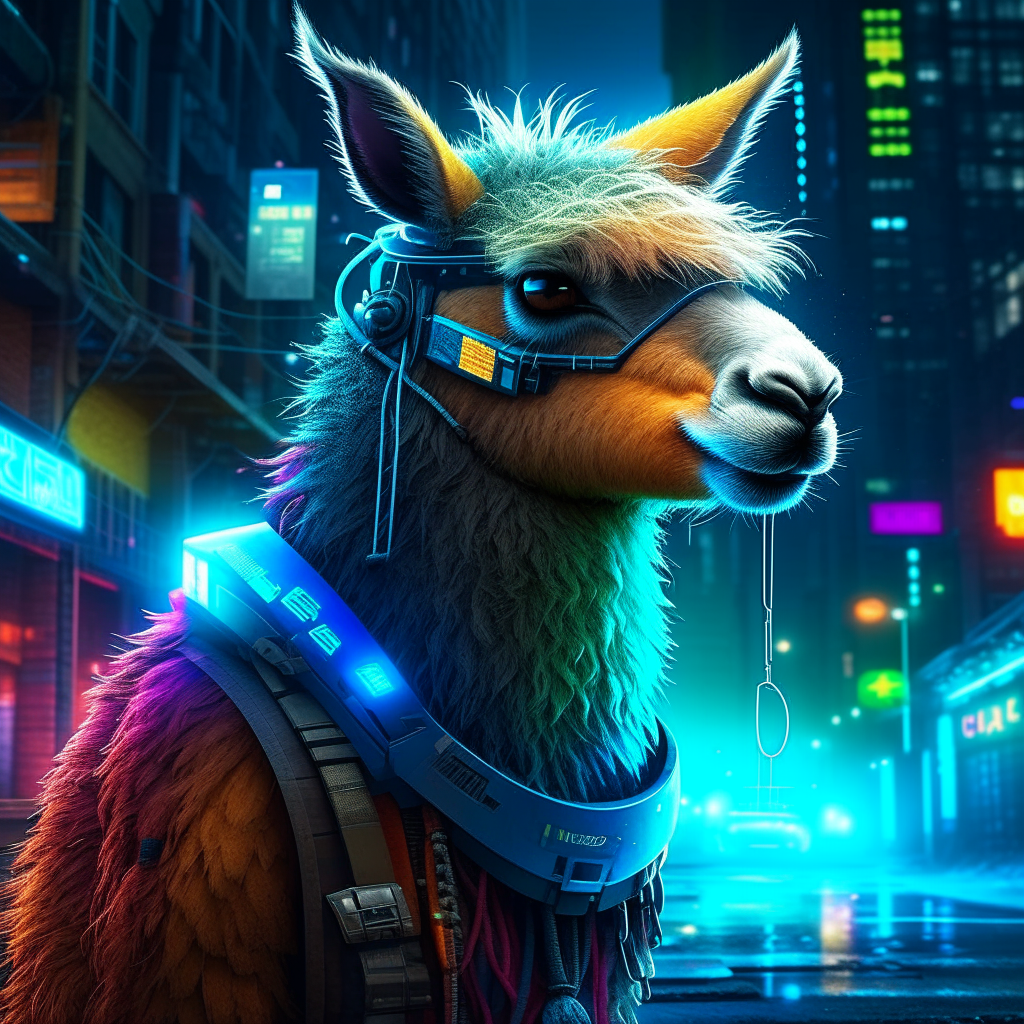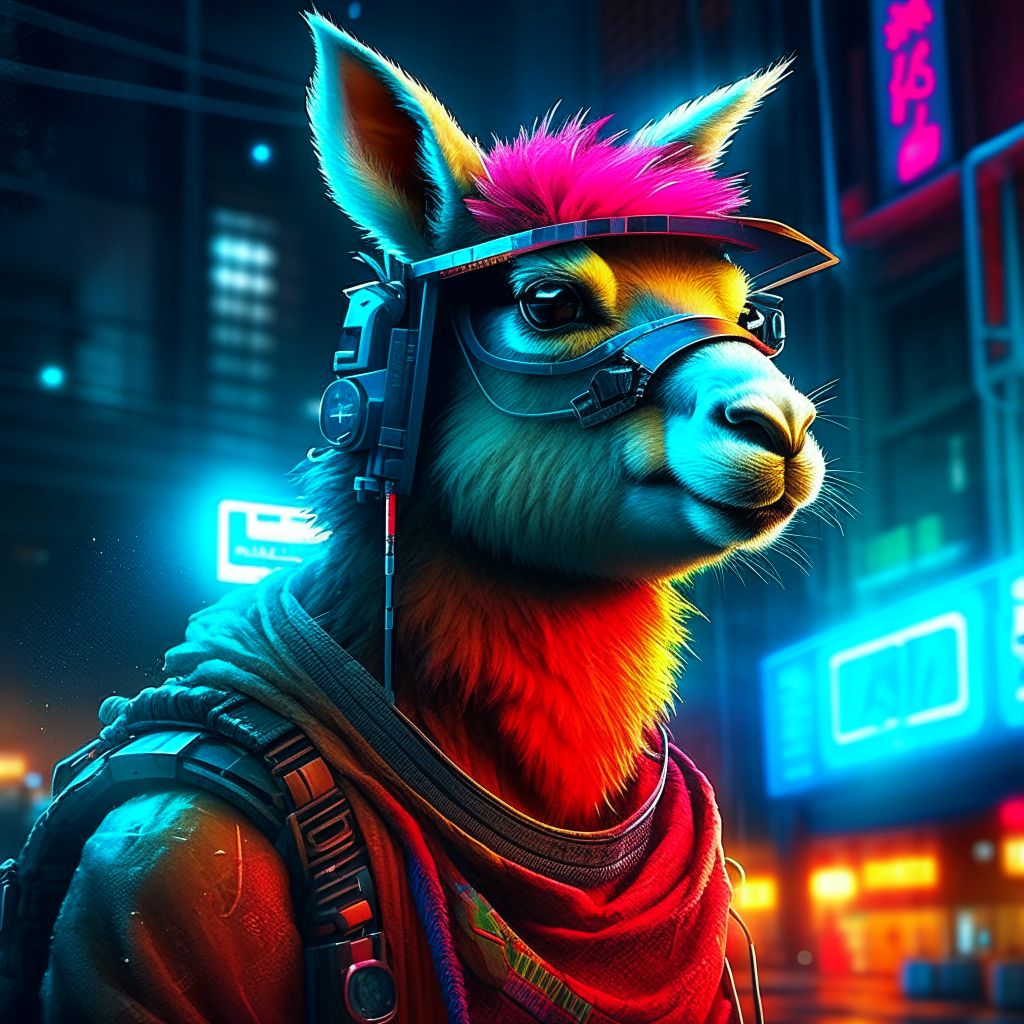qwen-vl-chat
Maintainer: lucataco

755

| Property | Value |
|---|---|
| Model Link | View on Replicate |
| API Spec | View on Replicate |
| Github Link | View on Github |
| Paper Link | View on Arxiv |
Create account to get full access
Model overview
qwen-vl-chat is a multimodal language model developed by lucataco, a creator featured on AIModels.fyi. It is trained using alignment techniques to support flexible interaction, such as multi-round question answering, and creative capabilities. qwen-vl-chat is similar to other large language models created by lucataco, including qwen1.5-72b, qwen1.5-110b, llama-2-7b-chat, llama-2-13b-chat, and qwen-14b-chat.
Model inputs and outputs
qwen-vl-chat takes two inputs: an image and a prompt. The image is used to provide visual context, while the prompt is a question or instruction for the model to respond to.
Inputs
- Image: The input image, which can be any image format.
- Prompt: A question or instruction for the model to respond to.
Outputs
- Output: The model's response to the input prompt, based on the provided image.
Capabilities
qwen-vl-chat is a powerful multimodal language model that can engage in flexible, creative interactions. It can answer questions, generate text, and provide insights based on the input image and prompt. The model's alignment training allows it to provide responses that are aligned with the user's intent and the visual context.
What can I use it for?
qwen-vl-chat can be used for a variety of tasks, such as visual question answering, image captioning, and creative writing. For example, you could use it to describe the contents of an image, answer questions about a scene, or generate a short story inspired by a visual prompt. The model's versatility makes it a valuable tool for a range of applications, from education and entertainment to research and development.
Things to try
One interesting thing to try with qwen-vl-chat is to use it for multi-round question answering. By providing a series of follow-up questions or prompts, you can engage the model in an interactive dialogue and see how it builds upon its understanding of the visual and textual context. This can reveal the model's reasoning capabilities and its ability to maintain coherence and context over multiple exchanges.
This summary was produced with help from an AI and may contain inaccuracies - check out the links to read the original source documents!
Related Models

qwen1.5-72b

6
qwen1.5-72b is the beta version of Qwen2, a transformer-based decoder-only language model pretrained on a large amount of data. It was created by lucataco. Similar models include the qwen1.5-110b, whisperspeech-small, phi-3-mini-4k-instruct, moondream2, and deepseek-vl-7b-base, all of which were also developed by lucataco. Model inputs and outputs qwen1.5-72b is a language model that generates text based on a given prompt. The model takes several inputs, including the prompt, system prompt, temperature, top-k and top-p sampling parameters, repetition penalty, max new tokens, and a random seed. Inputs Prompt**: The input text that the model will use to generate additional text. System Prompt**: An optional prompt to set the overall behavior and personality of the model. Temperature**: Controls the randomness of the generated text, with higher values leading to more diverse and unpredictable outputs. Top K**: The number of most likely tokens to consider during sampling. Top P**: The cumulative probability threshold to use for nucleus sampling, which focuses the sampling on the most likely tokens. Repetition Penalty**: A penalty applied to tokens that have already been generated, to discourage repetition. Max New Tokens**: The maximum number of new tokens to generate. Seed**: A random seed value to ensure reproducible results. Outputs The model outputs an array of generated text, which can be concatenated to form a coherent response. Capabilities qwen1.5-72b is a powerful language model capable of generating human-like text on a wide range of topics. It can be used for tasks such as text completion, language generation, and dialogue systems. The model's performance can be tuned by adjusting the input parameters, allowing users to generate outputs that are more or less creative, coherent, and diverse. What can I use it for? qwen1.5-72b can be used in a variety of applications, such as: Chatbots and virtual assistants Content generation for websites, blogs, and social media Creative writing and story generation Language translation and summarization Educational and research applications The model's lightweight and efficient design also makes it suitable for deployment on edge devices, enabling on-device language processing capabilities. Things to try One interesting aspect of qwen1.5-72b is its ability to generate diverse and creative outputs by adjusting the temperature parameter. By experimenting with different temperature values, users can explore the model's range of capabilities, from more logical and coherent responses to more imaginative and unpredictable outputs. Additionally, the model's system prompt feature allows users to tailor the model's personality and behavior to suit their specific needs, opening up a wide range of potential applications.
Updated Invalid Date

qwen1.5-110b

2
qwen1.5-110b is a transformer-based decoder-only language model developed by lucataco. It is the beta version of Qwen2, a model pretrained on a large amount of data. qwen1.5-110b shares similarities with other models created by lucataco, such as phi-3-mini-4k-instruct and qwen1.5-72b, which are also transformer-based language models. Model inputs and outputs qwen1.5-110b takes in a text prompt and generates a response. The input prompt can be customized with additional parameters like temperature, top-k, top-p, and repetition penalty to control the model's output. Inputs Prompt**: The input text prompt for the model to generate a response. System Prompt**: An additional prompt that sets the tone and context for the model's response. Temperature**: A value used to modulate the next token probabilities, affecting the creativity and diversity of the output. Top K**: The number of highest probability tokens to consider for generating the output. Top P**: A probability threshold for generating the output, keeping only the top tokens with cumulative probability above this value. Max New Tokens**: The maximum number of tokens the model should generate as output. Repetition Penalty**: A value that penalizes the model for repeating the same tokens, encouraging more diverse output. Outputs Text**: The generated response from the model based on the provided input prompt and parameters. Capabilities qwen1.5-110b is a powerful language model capable of generating human-like text on a wide range of topics. It can be used for tasks such as text generation, language understanding, and even creative writing. The model's performance can be fine-tuned by adjusting the input parameters to suit specific use cases. What can I use it for? qwen1.5-110b can be used for a variety of applications, such as chatbots, content creation, and language translation. For example, you could use the model to generate product descriptions, write short stories, or even engage in open-ended conversations. Additionally, the model's capabilities can be further expanded by fine-tuning it on domain-specific data, as demonstrated by similar models created by lucataco. Things to try To get the most out of qwen1.5-110b, you can experiment with different input prompts and parameter settings. Try generating text with varying temperatures to explore the model's creativity, or adjust the top-k and top-p values to control the diversity and coherence of the output. Additionally, consider exploring the model's capabilities in combination with other tools and techniques, such as prompt engineering or fine-tuning on specialized datasets.
Updated Invalid Date

llama-2-7b-chat

20
The llama-2-7b-chat is a version of Meta's Llama 2 language model with 7 billion parameters, fine-tuned specifically for chat completions. It is part of a family of Llama 2 models created by Meta, including the base Llama 2 7B model, the Llama 2 13B model, and the Llama 2 13B chat model. These models demonstrate Meta's continued advancement in large language models. Model inputs and outputs The llama-2-7b-chat model takes several input parameters to govern the text generation process: Inputs Prompt**: The initial text that the model will use to generate additional content. System Prompt**: A prompt that helps guide the system's behavior, instructing it to be helpful, respectful, honest, and avoid harmful content. Max New Tokens**: The maximum number of new tokens the model will generate. Temperature**: Controls the randomness of the output, with higher values resulting in more varied and creative text. Top P**: Specifies the percentage of the most likely tokens to consider during sampling, allowing the model to focus on the most relevant options. Repetition Penalty**: Adjusts the likelihood of the model repeating words or phrases, encouraging more diverse output. Outputs Output Text**: The text generated by the model based on the provided input parameters. Capabilities The llama-2-7b-chat model is capable of generating human-like text responses to a wide range of prompts. Its fine-tuning on chat data allows it to engage in more natural and contextual conversations compared to the base Llama 2 7B model. The model can be used for tasks such as question answering, task completion, and open-ended dialogue. What can I use it for? The llama-2-7b-chat model can be used in a variety of applications that require natural language generation, such as chatbots, virtual assistants, and content creation tools. Its strong performance on chat-related tasks makes it well-suited for building conversational AI systems that can engage in more realistic and meaningful dialogues. Additionally, the model's smaller size compared to the 13B version may make it more accessible for certain use cases or deployment environments. Things to try One interesting aspect of the llama-2-7b-chat model is its ability to adapt its tone and style based on the provided system prompt. By adjusting the system prompt, you can potentially guide the model to generate responses that are more formal, casual, empathetic, or even playful. Experimenting with different system prompts can reveal the model's versatility and help uncover new use cases.
Updated Invalid Date

llama-2-13b-chat

18
The llama-2-13b-chat is a 13 billion parameter language model developed by Meta, fine-tuned for chat completions. It is part of the Llama 2 series of language models, which also includes the base Llama 2 13B model, the Llama 2 7B model, and the Llama 2 7B chat model. The llama-2-13b-chat model is designed to provide more natural and contextual responses in conversational settings compared to the base Llama 2 13B model. Model inputs and outputs The llama-2-13b-chat model takes a prompt as input and generates text in response. The input prompt can be customized with various parameters such as temperature, top-p, and repetition penalty to adjust the randomness and coherence of the generated text. Inputs Prompt**: The text prompt to be used as input for the model. System Prompt**: A prompt that helps guide the system's behavior, encouraging it to be helpful, respectful, and honest. Max New Tokens**: The maximum number of new tokens to be generated in response to the input prompt. Temperature**: A value between 0 and 5 that controls the randomness of the output, with higher values resulting in more diverse and unpredictable text. Top P**: A value between 0.01 and 1 that determines the percentage of the most likely tokens to be considered during the generation process, with lower values resulting in more conservative and predictable text. Repetition Penalty**: A value between 0 and 5 that penalizes the model for repeating the same words, with values greater than 1 discouraging repetition. Outputs Output**: The text generated by the model in response to the input prompt. Capabilities The llama-2-13b-chat model is capable of generating coherent and contextual responses to a wide range of prompts, including questions, statements, and open-ended queries. It can be used for tasks such as chatbots, text generation, and language modeling. What can I use it for? The llama-2-13b-chat model can be used for a variety of applications, such as building conversational AI assistants, generating creative writing, or providing knowledgeable responses to user queries. By leveraging its fine-tuning for chat completions, the model can be particularly useful in scenarios where natural and engaging dialogue is required, such as customer service, education, or entertainment. Things to try One interesting aspect of the llama-2-13b-chat model is its ability to provide informative and nuanced responses to open-ended prompts. For example, you could try asking the model to explain a complex topic, such as the current state of artificial intelligence research, and observe how it breaks down the topic in a clear and coherent manner. Alternatively, you could experiment with different temperature and top-p settings to see how they affect the creativity and diversity of the generated text.
Updated Invalid Date